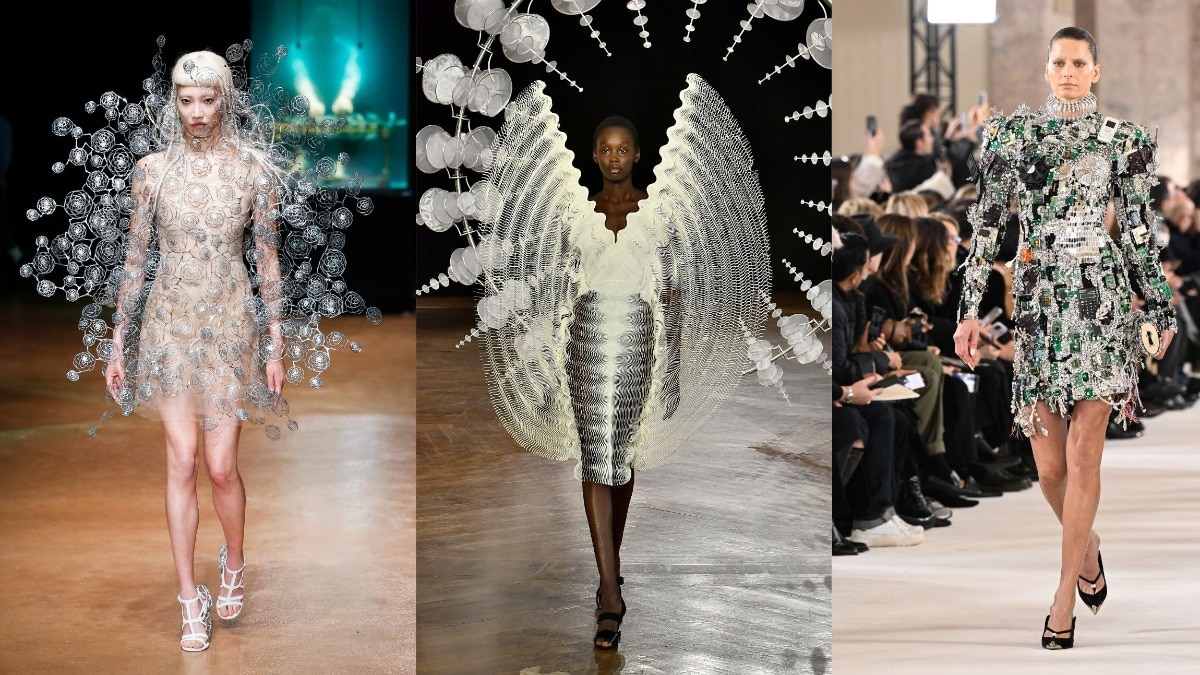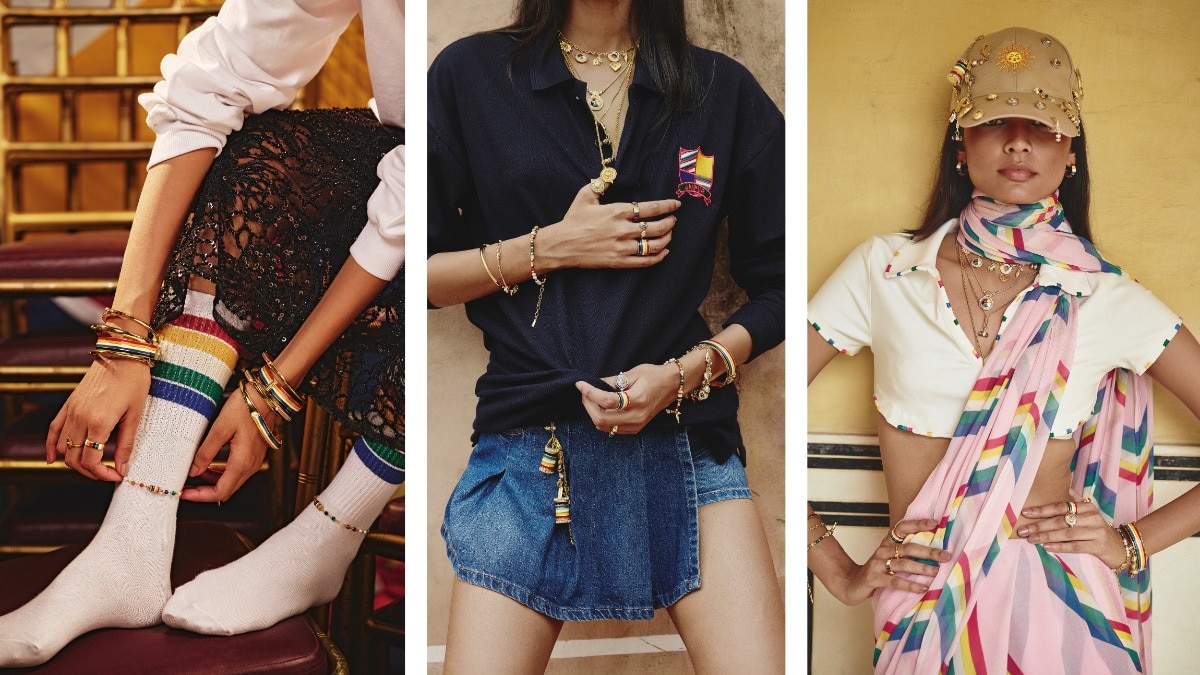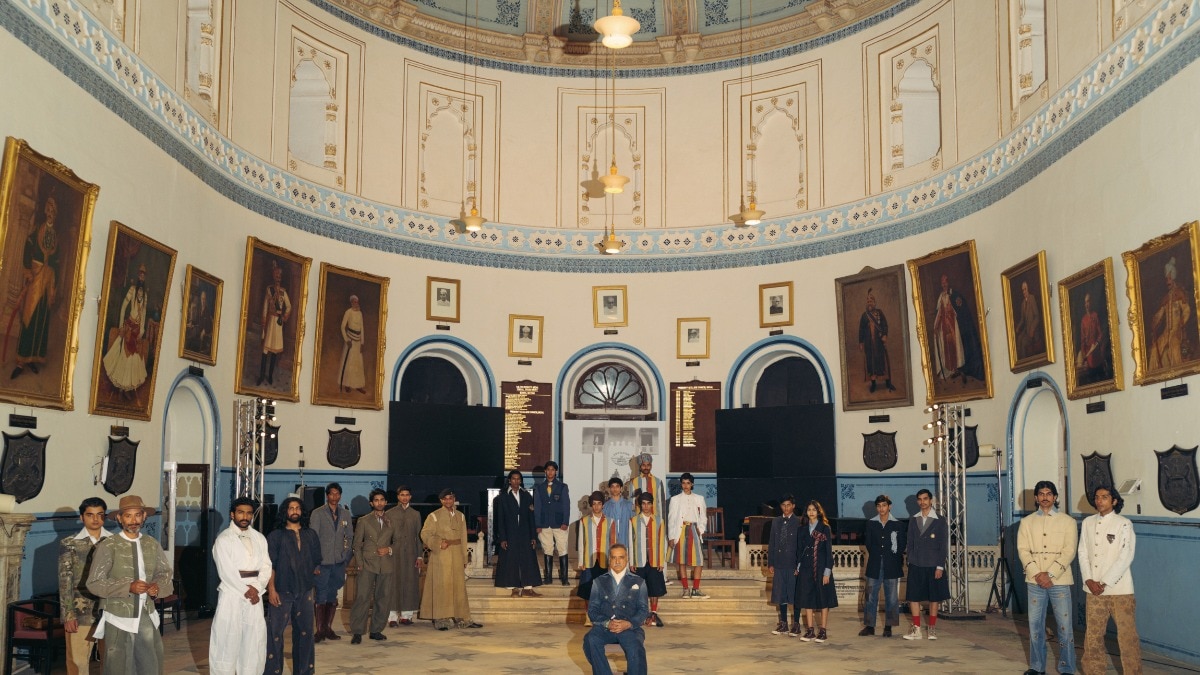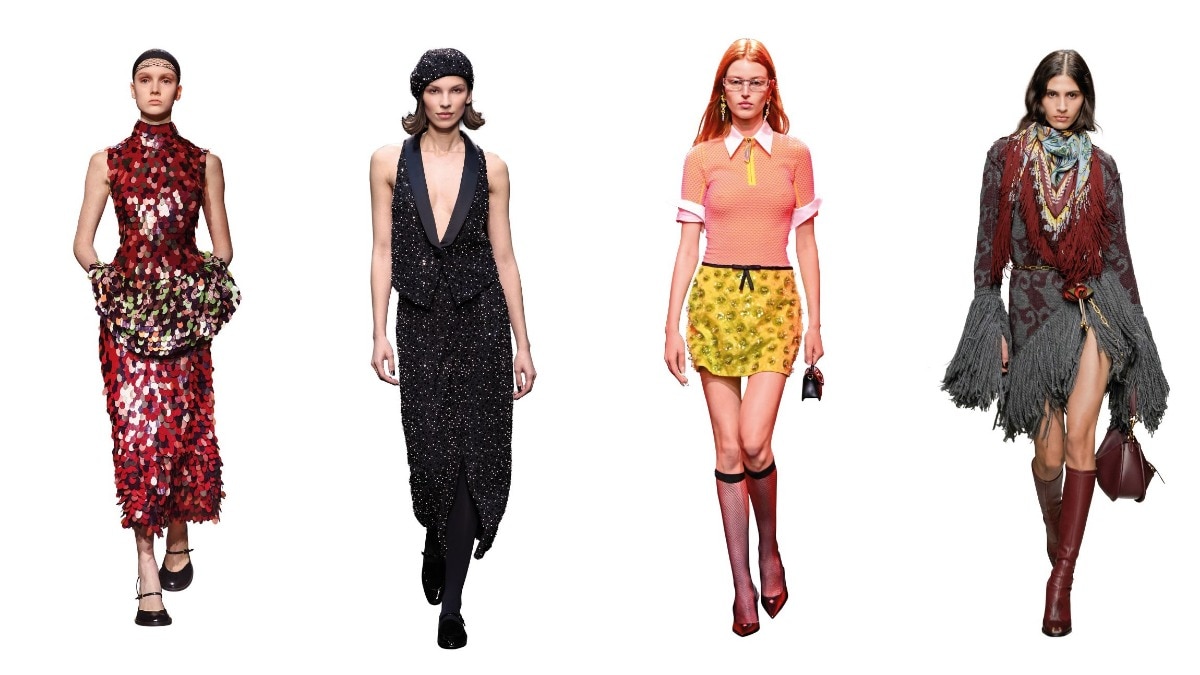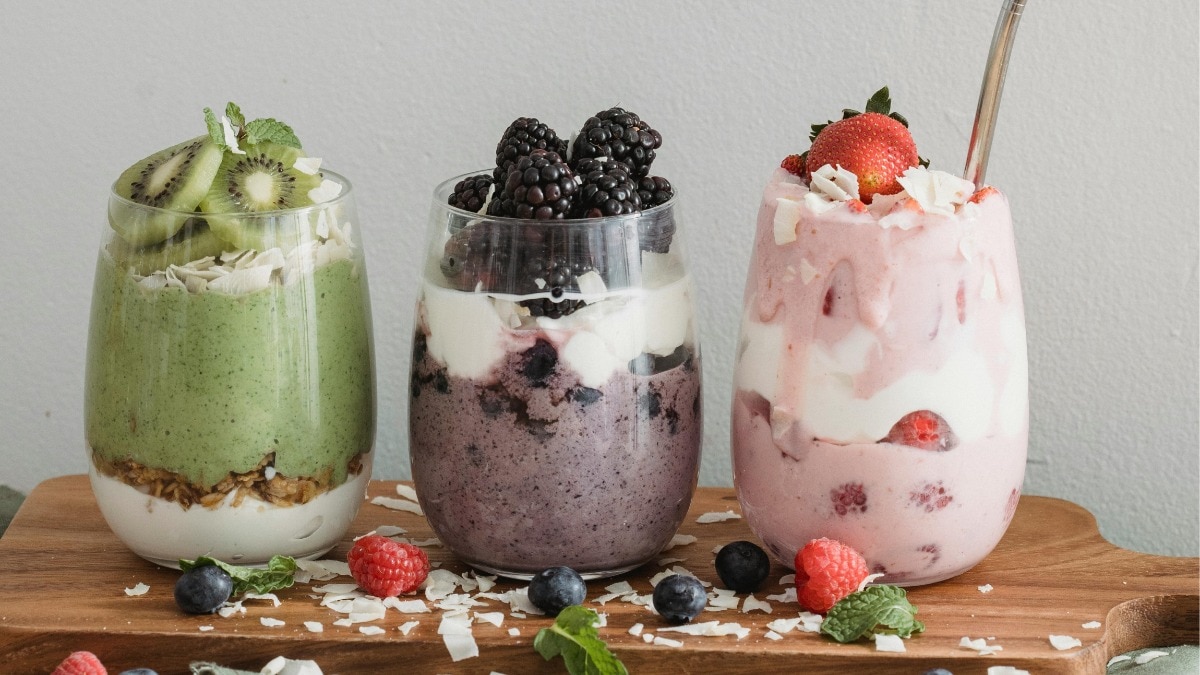
Looking back at the four decades of Marc Jacobs making fashion that is personal, urgent, and era-defining
“Once I knew what I loved,” he says, “I just couldn’t get enough of it.”

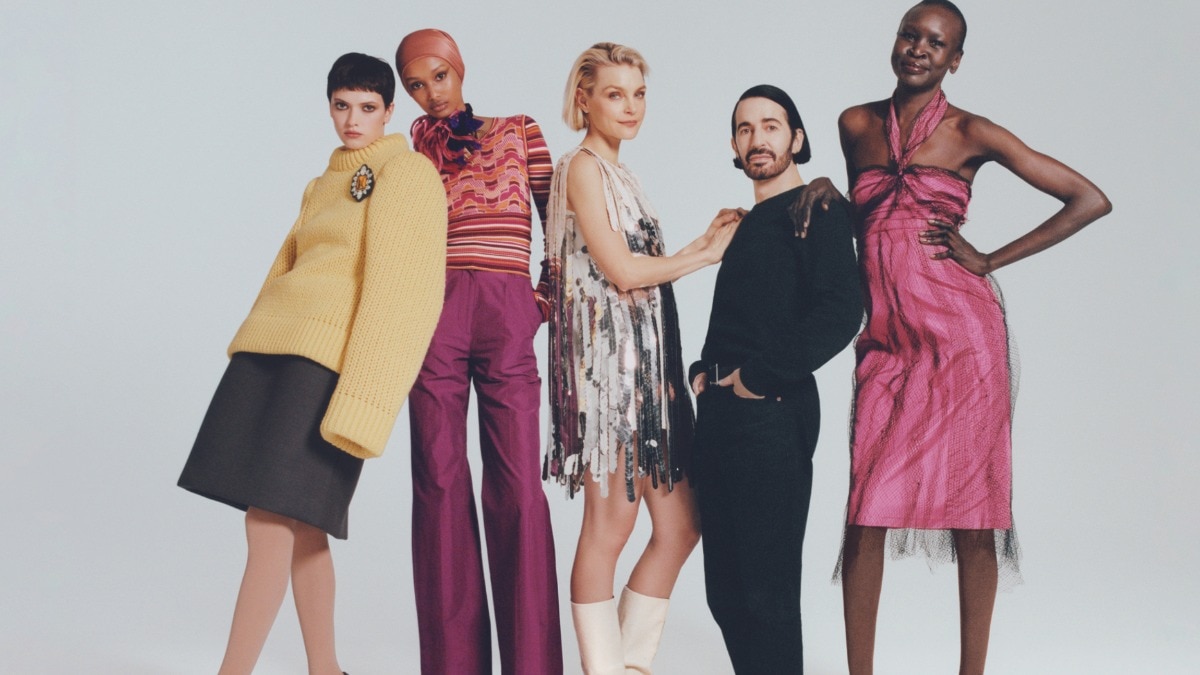
Marc Jacobs, the fashion brand, has been in business for 40 years, but Marc Jacobs, the person, now 61, has been dreaming of fashion for much longer.
“You know how people say to count sheep in order to fall asleep?” Jacobs asks. “Well, I used to imagine myself folding this coveted red Lacoste corduroy shirt, literally putting it face down and folding it into thirds.” He mimics folding a shirt, recalling his bedtime ritual as a 12-or-13-year-old, when he was living on the Upper West Side of Manhattan with his grandmother Helen. “That was the vision in my head. That was my sheep.”
We are sitting in his white office in Soho. A photo of svelte, nude Jacobs circa 2009 hangs on one wall, and opposite it on the ground, leaning against a bookshelf, is an image of grungy, sweater-clad Jacobs circa the mid- ’90s, lounging on a bed with stylist Venetia Scott and directors Sofia Coppola and Zoe Cassavetes. In the middle is 2024 Jacobs, with a sleek bob, silver nail polish, a Carhartt hoodie, Saint Laurent jeans, and Cactus Plant Flea Market Nikes.
One could wonder, within this triptych, which is the real Marc Jacobs? And these are only a handful of the permutations over the years. There is also the 15-year-old fashion-obsessed stock boy at the influential ’80s Manhattan boutique Charivari. There is the brooding young designer captured in an etching by Elizabeth Peyton and the bombastic nude hunk captured on film by Juergen Teller. He has been the consummate showman taking a bow after presenting a spectacular collection in Paris for Louis Vuitton, where he served as creative director from 1997 to 2013, as well as the shy designer peeking out after a twee Marc Jacobs one in New York. Is he the Jacobs who dressed as a gigantic pigeon at his Christmas party? Or the one who walked Kate Moss up the steps to the Met Gala in a tux? Maybe the real Jacobs is the pearl-necklace-wearing bookworm who appears on his Instagram these days, paging through In Cold Blood in the Frank Lloyd Wright-designed home he shares with his husband, Charly Defrancesco, in Rye, New York.

The answer, of course, is that he is all of them. “The transformation or the reinvention, I think, is the essence of what I’ve always loved about this,” Jacobs says from across his desk.
Jacobs’s relentless, perpetual state of evolution, fueled by a ravenous curiosity, is what has made him one of the most thrilling designers of our lifetime. What remains constant throughout every iteration and every collection is an unbridled love for fashion and a formidable drive to keep creating.
“When he does a collection, I think he almost lays down and cuts his heart open for it,” says the designer Anna Sui, who is a close friend. “There’s that much put into every collection and that much that he’s trying to express and share with everybody.”
That emotionally raw, heart-on-the-floor passion translates viscerally to his designs. Jacobs is one of few designers in New York making clothes that are about an idea or evoking a feeling rather than solving a need in your closet. He responds to what inspires him and, in turn, creates clothing for a more inspiring life.
As instinctive as Jacobs’s design process is—he describes it as “a force field at work, where it’s sending you this thing, and then that triggers something else, and that thing triggers something else, and you get to wherever you’re going”—his career has become an industry playbook, a template that fashion brands are still learning from (and copying) to this day.
When Jacobs graduated from the Parsons School of Design in 1984, he was hired immediately by the man who would become his longtime business partner, Robert Duffy, to design Sketchbook, a contemporary line. The pair founded Marc Jacobs the same year. “I didn’t really see myself as going to work for anyone,” he says.
Jacobs did, of course, go on to work for others—first at Perry Ellis, where his successful four-year run as creative director is overshadowed by the infamous 1992 grunge collection that got him fired. And then at Louis Vuitton, the jewel in the crown of LVMH founder, chairman, and CEO Bernard Arnault’s empire, where Jacobs became the first American selected to lead a French luxury brand.
“Like John (Galliano) at Dior, Marc was a risk Mr. Arnault took,” says Sidney Toledano, the former president of LVMH Fashion Group. (LVMH owns a majority stake in Marc Jacobs.) The risk paid off; plucking designers from independent brands and seating them at the throne of European heritage labels is now a common practice.
At Vuitton, Jacobs collaborated with artists like Stephen Sprouse, Takashi Murakami, and Richard Prince, inviting them to tweak and twist the classic LV Monogram. The results were wildly successful (the Sprouse Speedy bag is now a coveted grail) and set a new standard for luxury branding.
“From his generation of designers, for me, he’s one of the best,” Toledano says of Jacobs. “The work he did at Vuitton, it was groundbreaking. He brought the ready-to-wear, the fashion spirit, the creativity.”
Other Jacobs hallmarks that became de rigueur industry practices: launching a little-sister or diffusion line (Jacobs started Marc by Marc Jacobs in 2001 and its successor, Heaven by Marc Jacobs, in 2020) and—his most influential calling card—stacking a starry front row with the most important musicians, actors, directors, and artists of the time. This is something others covet and build whole marketing strategies around, but Jacobs does it easily, since most of the time they are simply his friends.
“Marc is my family,” says Lil’ Kim, who has known Jacobs for 20 years. Their friendship, born at a fashion show, has taken them from “eating strawberries in Marc’s studio” to the Met Gala, but Kim remembers Jacobs’s generosity and support during her “darkest and hardest times”. He was there for me before a lot of people who I thought would be, and I will forever take that with me,” she says. “He threw this big, lavish party for me, and he made the T-shirt line Marc Loves Kim... I will forever hold him on a pedestal.”
For all his success, and considering the impact of his approach to fashion, Jacobs insists that he “never did a show or designed a collection to be commercial.” (While Toledano won’t comment on brand figures, he will say the Marc Jacobs brand “is strong.”) “Some of them may have been more commercial than others,” Jacobs concedes, “but I think what happened, especially once the Vuitton thing started, was getting into the idea of a theatrical experience.” He points to a Fall 2020 Marc Jacobs show choreographed by Karole Armitage as a personal favourite and one of his most realised collections; it cycled between mod ’60s dresses vaguely evocative of Jackie O, punkish plaids, and majestic minidresses made of metallic tinsel. “It wasn’t a presentation of clothes you need,” he says of his overarching ethos. “It was the telling of a story you might be interested in seeing. That was the big difference.”
The kind of kismet Jacobs seems to stumble into time and time again can seem implausible—almost blessed, as though through the sheer might of believing a teenager was able to simply will his dream of becoming a globally famous fashion designer into a reality.
“Once I knew what I loved, I just couldn’t get enough of it,” says Jacobs. “People always say, when you learn a new word, then you start hearing it all the time. It was a similar thing with experience and fashion. The more I loved fashion, the more fashion people were drawn to me and I was drawn to them. I had such a voracious appetite for what I loved.”
What Jacobs has loved has been the lifeblood of his brand since day one. Where other designers may try to capture a mood in the zeitgeist, dress a certain type of woman with a wardrobe, or respond to market desires for specific items, Jacobs’s collections are powered wholly by love. If you’re never chasing trends, the greater the chance to create them or even shift the whole mood of fashion, which Jacobs has done over and over again.
Think of the gentle rounded collars and nipped-waist blouses from Fall 2004, a nod to the screen sirens Jacobs loves, and the sensual but prim dress of the artist Rachel Feinstein, who is a friend. Think of his Fall 2012 homage to fashion journalist Lynn Yaeger’s eclectic style by way of Jamiroquai or the Fall 2015 nod to the strictness of Diana Vreeland’s hell-red living room, imagined with tight waists and seductress knee-high boots. Both the Penn State Blue Band and Sonic Youth have performed on his runways, and his inspirations range from the sullen teen superhero Violet from The Incredibles (Fall 2005) to the rebellious punk spirit of Vivienne Westwood (Spring 2023). To follow Marc Jacobs’s design history isn’t just to learn about fashion but to learn about the people, art, and ideas that move Jacobs himself. These collections are not the result of some Q1 strategy session or tallied up on a line sheet.
As Jacobs’s fashion shows were evolving into megawatt theatrical productions, so was his star rising in popular culture. You could pinpoint 1998 as the beginning of Marc Jacobs the celebrity: He won Womenswear Designer of the Year at the VH1 Fashion Awards, one of the earliest collisions of fashion and popular culture. Winona Ryder wore one of his dresses to the highly publicised trial that stemmed from a 2001 shoplifting incident, helping put Jacobs’s designs in front of a growing celebrity-obsessed audience. By 2005, his Stam bag, a quilted leather hobo shape named for model Jessica Stam, was on the arms of the most paparazzied It girls, like Lindsay Lohan and Beyoncé. His campaigns and front rows took on a more A-list quality too: Victoria Beckham spilt out of a shopping bag for a 2008 ad; Miley Cyrus brooded on a beach for the brand in 2014. Things came full circle when Kendall Jenner made her runway debut during Jacobs’s sleek, neutral-toned Fall 2014 collection. In 2016, she was joined on Jacobs’s catwalk by Lady Gaga.

Off the runway, Jacobs had become so entrenched in pop culture that in 2007, this magazine transformed Jacobs, alongside Karl Lagerfeld and Donatella Versace, into a Simpsons character. (It’s now tattooed on his left bicep.) The filmmaker Loïc Prigent followed him for months to produce the revealing and sentimental documentary Marc Jacobs & Louis Vuitton in 2007. By 2010, his personal life was chronicled by Page Six and he was just as likely to get papped on vacation as the A-list stars who wore his clothes.
“I remember there were a couple of things that were very hurtful that were written about me when I was very down and I was not in a good place,” he says. Jacobs has been open about his struggles with addiction and stints in rehab. “That’s part of the price that you pay when you put yourself out there and you make yourself known and you make your thoughts known and your feelings known.”
“There were terrible times,” recalls Sui. “There were times when we were all worried, but I never felt that he wasn’t going to survive it.” Why? “Fashion is absolutely what he loves,” she says. “I think he can’t help himself.”
“I’m in a good mood today,” Jacobs says, smirking at me, “so I think I have a very positive attitude, and I can see things as being just amazing, like, ‘This is incredible. How did we do that? How have we done this for 40 years?’”
It’s not just that he’s “done this” for 40 years that’s impressive; it’s that 40 years later, he’s still as voracious, passionate, and creative as he was on day one. His recent Spring 2024 collection blew up many of his design signatures into doll clothes. There are the safari jackets of Spring 2015, now plumped and padded, the tracksuits of Fall 2017 supersized and extra long or shrunken into miniatures and studded with Heaven crystal bears. The prom dresses from Spring 2006 and the surreal lingerie looks of Spring 2008 return in topsy-turvy proportions alongside a hulking version of the Venetia bag. It’s not just a rehash; there are new belted board shorts, rollneck sweaters with tugged-front shoulders, and dementedly lovely bejewelled and pailletted dresses that look like a cross between the wardrobes of Diana Ross and Polly Pocket.
“Marc Jacobs is a legend,” says Sui. “That’s what every designer strives for, that signature or identity—an icon of the brand. I think that he’s established so many icons of his brand that will carry on forever.”
Since at least 2016, Marc Jacobs has attached the hashtag #gratefulnothateful to nearly all of his Instagram posts. The hashtags are as much for Jacobs as they are for his followers—a reminder to embrace positivity first and foremost. Because it’s not that Jacobs never gets frustrated or angry or wants to throw in the towel.
“Oh, that happens constantly,” he says, laughing. “It happened just as much earlier on as it does now. There’s some pain and suffering involved in doing this.”
He remembers how he felt after the Spring 2008 show started particularly late and received a lot of flak. “I was like, ‘We’ve been working for six months to make a seven-minute show that you’re going off about because it’s 45 minutes late. Do me a favor: Stay home.’” (Since that show, which started two hours late, Jacobs’s shows have become known for starting precisely, to the minute, on time.)
But in 2024, rather than kvetch, Jacobs wants to just focus on the good stuff. “I check myself and think, ‘You should be grateful. Be grateful that you have good friends. Be grateful that you get to eat well and you get to see these things and be a part of this world,’” he says. “That’s where that hashtag comes from.”
“There’s this great expression that my shrink came up with,” he continues. “I was like, ‘I just don’t know why I do this. Just so much goes wrong, and it’s depressing,’ and whatever. He was like, ‘Well, you do it for those transcendent moments of joy.’ He said that, and then we’ve all used that expression around here.” Jacobs gestures across his office to his attendants, many of whom have worked with the designer for decades. “This is what that transcendent moment of joy is: It’s like that moment where all the pain and all the suffering and all the confusion and all the insecurity and everything negative goes away and you’re left with ‘This is why I do this. This is really good.’”
He glances away at a Birkin bag stuffed with silver Balenciaga ballet flats that he will change into after our meeting for dinner with Sui and Warhol superstar Jane Holzer. His Saint Laurent smoking jacket is in the car, waiting for him, unwrinkled. After dinner, he’ll decamp back to Rye with his husband for a night of reading.
“I’m really lucky that I get to do this. I’m really lucky that even though they’re few and they’re far between, those transcendent moments of joy keep coming. So no matter how much I bitch, moan, and complain, and just want to give up, then something happens,” he says. “And I just think, ‘Wow’.”
This article originally appeared in Harper's Bazaar India, June-July print edition.
Lead image credit: Louis Vuitton
Lead image featuring: Valerie Scherzinger in spring 2024, Ugbad Abdi in spring 2011, Jessica Stam in Fall 2003, and Alek Wek in spring 2001. All clothing and accessories, Marc Jacobs
Photographs by Grace Ahlbom
Model: Ugbad Abdi, Valerie Scherzinger, Jessica Stam, and Alek Wek
Hair: Dylan Chavles for Oribe; Make-up: Jen Myles; Manicures: Natalie Pavloski for Chanel
Casting: Anita Bitton at the Establishment.
Styling: Clare Byrne
Also read: Cartier celebrates the 100 glorious years of Trinity with modern interpretations
Also read: Remembering Roberto Cavalli's legacy, artistic sensibilities, and influences

